
Without the operating system, the laptop cannot work, so it is set immediately after purchasing the device. Now, some models are already distributed from the installed Windows, but if you have a clean laptop, then all actions must be done manually. There is nothing complicated in this, you will only need to follow the instructions below.
How to install Windows 7 on a laptop with UEFI
A UEFI came to replace the BIOS, and now this interface is used in many laptops. Using UEFI, controls the functions of the equipment and loading the operating system. The installation process on laptops with this interface is slightly different. Let's wonder every step in detail.Step 1: UEFI Setup
Drives in new laptops are ever less often, and the installation of the operating system is made using a flash drive. In case you are going to install Windows 7 from the disk, you do not need to set up the UEFI. Simply insert the DVD into the drive and turn on the device, after which you can immediately go to the second step. Those users who use the boot flash drive will need to perform a few simple actions:
Step 2: Installing Windows
Now insert the loading USB flash drive into the connector or DVD into the drive and run the laptop. The disc is automatically selected first in priority, but thanks to the previously executed settings now and the USB flash drive will be started first. The installation process is not complicated and requires the user to perform only a few simple actions:
- In the first window, specify the interface language convenient for you, time format, monetary units and keyboard layout. After the selection, click "Next".
- In the "Installation Type" window, select "Full Setup" and go to the next menu.
- Select the desired partition to install the OS. In case of need, you can format it by deleting all the files of the previous operating system. Mark the appropriate section and click "Next".
- Specify the username and name of the computer. This information will be extremely useful if you want to create a local network.
- Installing drivers. If the laptop has a drive, then most often included a disk with official drivers from developers. Just run it and make installation. In the absence of a DVD, you can pre-download the Offline Driver Pack Solution Driver or any other convenient program for installing drivers. Alternative Method - Manual Installation: You just need to put only a network driver, and everything else can be downloaded from official sites. Choose any way convenient to you.
- Loading a browser. Since Internet Explorer is not popular and not very convenient, most users immediately download another browser: Google Chrome, Opera, Mozilla Firefox or Yandex.Bauzer. Through them already download and install the necessary programs for working with various files.
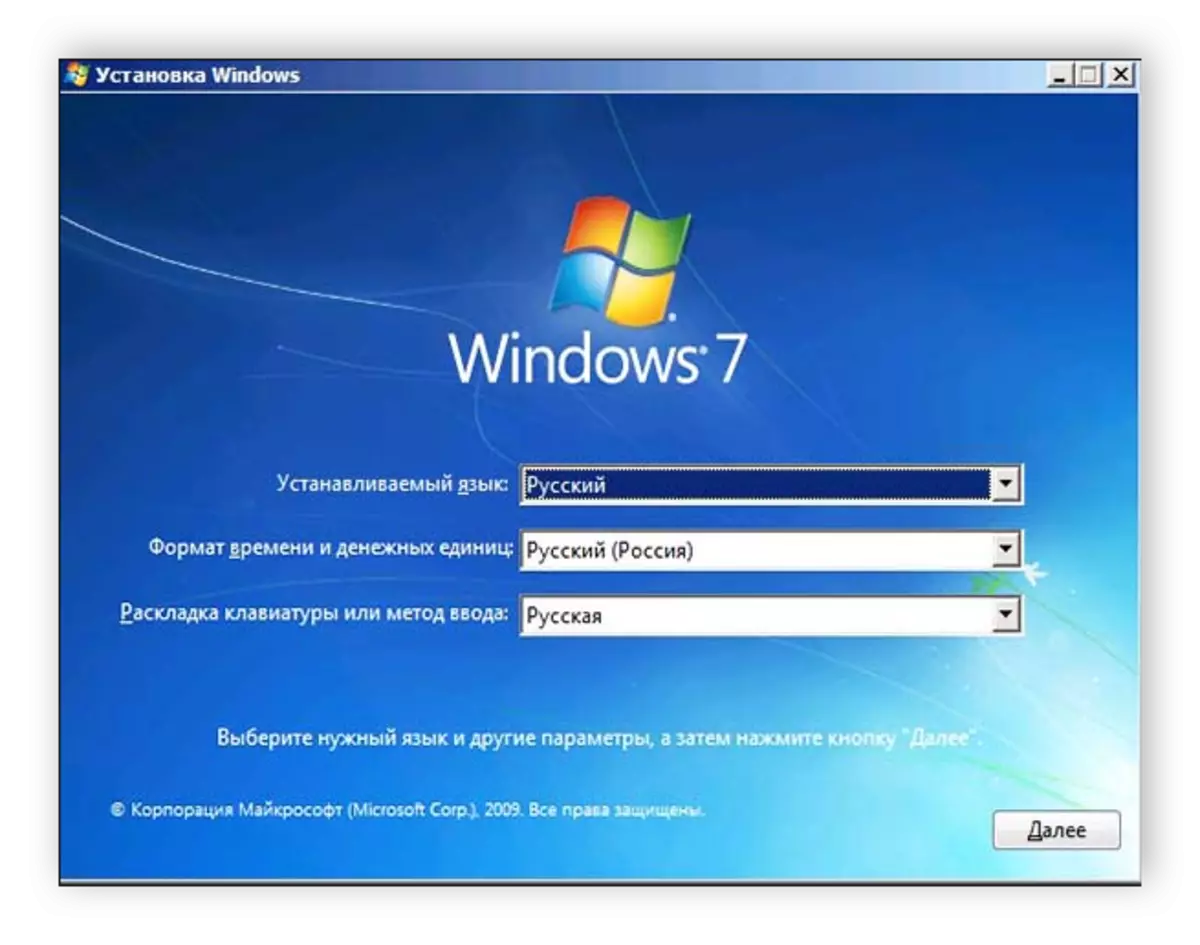
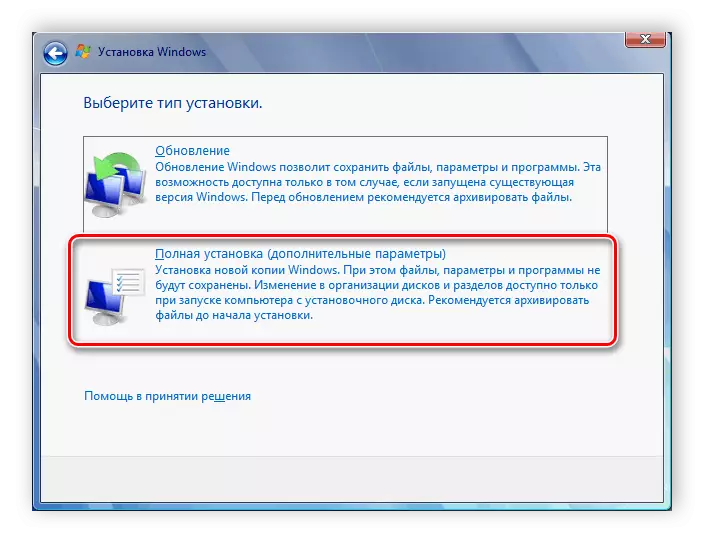
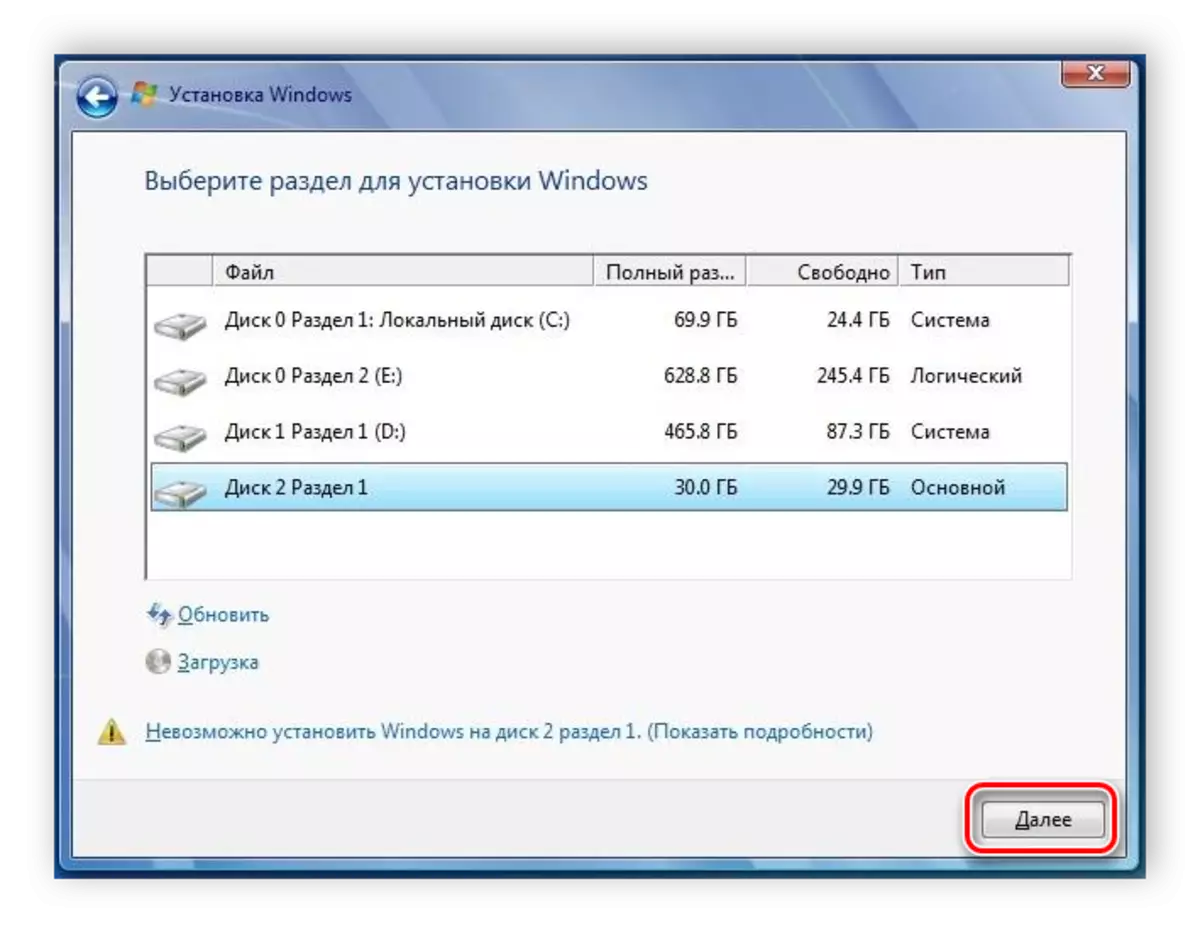
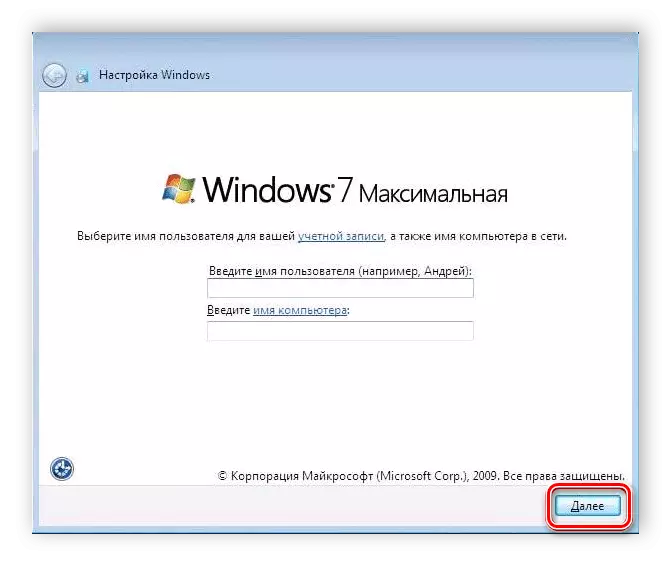
Now the installation of the OS will begin. It will last for a while, all progress will be displayed on the screen. Please note that the laptop will be rebooted several times, after which the process will automatically continue. The end will be configured to configure the desktop, and you will start Windows 7. You will need to install the most necessary programs and drivers.
Step 3: Install Drivers and Software Required
Although the operating system is established, but the laptop cannot yet fully function. Devices lack drivers, and for ease of use, you also need to have several programs. Let's analyze everything in order:
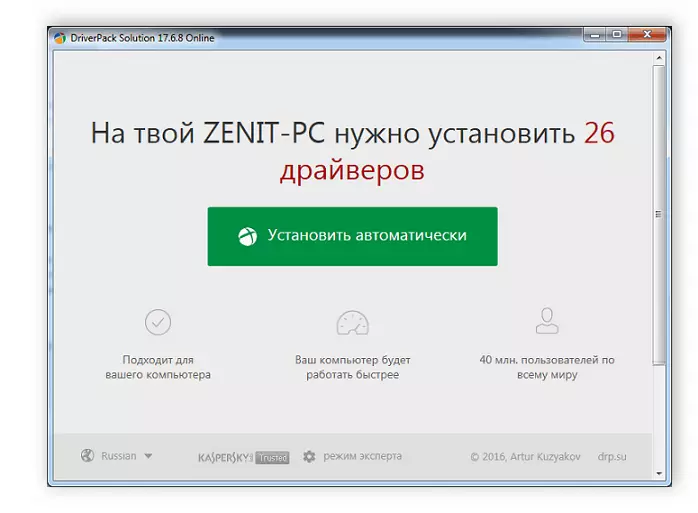
Read more:
The best programs for installing drivers
Search and installation driver for network card
Now that the Windows 7 operating system is standing on the laptop and all the necessary important programs can be safely started using comfortable use. After the installation is completed, it is enough to go back to the UEFI and change the priority of downloading to the hard disk or leave everything as it is, but insert a USB flash drive only after the start of the OS, so that the start pass is correct.
